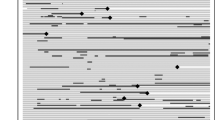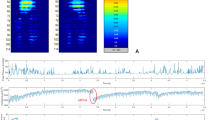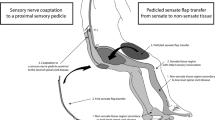Abstract
Study design:
A multicentre, prospective, assessor-blinded, parallel randomised controlled trial.
Objectives:
The objective of the trial was to determine the effectiveness of telephone-based management of pressure ulcers in people with spinal cord injury (SCI) in low- and middle-income countries.
Methods:
One hundred and twenty people with SCI living in the community were recruited through three hospitals in India and Bangladesh between November 2013 and March 2016. Participants had sustained an SCI >3 months prior and had a pressure ulcer. Participants were randomly allocated (1:1) to a control or intervention group. Participants in the control group received no intervention. Participants in the intervention group received weekly advice by telephone for 12 weeks about the management of their pressure ulcers from a trained health-care professional. Outcomes were measured by a blinded assessor at baseline and 12 weeks. There was one primary outcome, namely, the size of the pressure ulcer and 13 secondary outcomes.
Results:
The mean between-group difference for the size of the pressure ulcer at 12 weeks was 2.3 cm2 (95% confidence interval −0.3 to 4.9; favouring the intervention group). Eight of the 13 secondary outcomes were statistically significant.
Conclusion:
The results of our primary outcome (that is, size of pressure ulcer) do not provide conclusive evidence that people with SCI can be supported at home to manage their pressure ulcers through regular telephone-based advice. However, the results from the secondary outcomes are sufficiently positive to provide hope that this simple intervention may provide some relief from this insidious problem in the future.
Similar content being viewed by others
Log in or create a free account to read this content
Gain free access to this article, as well as selected content from this journal and more on nature.com
or
References
Zakrasek EC, Creasey G, Crew JD . Pressure ulcers in people with spinal cord injury in developing nations. Spinal Cord 2015; 53: 7–13.
Kovindha A, Kammuang-Lue P, Prakongsai P, Wongphan T . Prevalence of pressure ulcers in Thai wheelchair users with chronic spinal cord injuries. Spinal Cord 2015; 53: 767–771.
Canadian best practice guidelines for the prevention and management of pressure ulcers in people with spinal cord injury. A resource handbook for clinicians. (Internet). 2013 (cited 05 June 2016). Available from http://onf.org/system/attachments/168/original/Pressure_Ulcers_Best_Practice_Guideline_Final_web4.pdf.
Moore ZE, Cowman S . Repositioning for treating pressure ulcers. Cochrane Database Syst Rev 2015; 1: Cd006898.
Bickenbach J, Officer A, Shakespeare T, von Groote P (eds). World Health Organization and International Spinal Cord Society- International Perspectives on Spinal Cord Injury. WHO: Malta, 2013..
Hossain MS, Rahman MA, Herbert RD, Quadir MM, Bowden JL, Harvey LA . Two-year survival following discharge from hospital after spinal cord injury in Bangladesh. Spinal Cord 2016; 54: 132–136.
European Pressure Ulcer Advisory Panel and National Pressure Ulcer Advisory Panel Treatment of pressure ulcers: Quick Reference Guide. National Pressure Ulcer Advisory Panel: Washington, DC, USA. 2009.
Australian Wound Management Association Pan Pacific Clinical Practice Guideline for the Prevention and Management of Pressure Injury. Cambridge Media: Osborne Park, WA, USA. 2012.
McInnes E, Jammali-Blasi A, Bell-Syer SEM, Dumville JC, Middleton V, Cullum N . Support surfaces for pressure ulcer prevention. Cochrane Database Syst Rev 2015, CD001735.
Dam A, Datta N, Mohanty UR, Bandhopadhyay C . Managing pressures ulcers in a resource constrained situation: a holistic approach. Indian J Palliat Care 2011; 17: 255–259.
Dieleman JL, Templin T, Sadat N, Reidy P, Chapin A, Foreman K et al. National spending on health by source for 184 countries between 2013 and 2040. Lancet 2016; 387: 2521–2535.
Swapna N (ed.). Telecommunication sector in India – an analysis. MPGI National Multi Conference; 7–8 April 2012; Maharashtra, India. International Journal of Computer Applications: Bangalore, India.
Halstead LS, Dang T, Elrod M, Convit RJ, Rosen MJ, Woods S . Teleassessment compared with live assessment of pressure ulcers in a wound clinic: a pilot study. Adv Skin Wound Care 2003; 16: 91–96.
Vesmarovich S, Walker T, Hauber RP, Temkin A, Burns R . Use of telerehabilitation to manage pressure ulcers in persons with spinal cord injuries. Adv Wound Care 1999; 12: 264–269.
Garber SL, Rintala DH, Holmes SA, Rodriguez GP, Friedman J . A structured educational model to improve pressure ulcer prevention knowledge in veterans with spinal cord dysfunction. J Rehabil Res Dev 2002; 39: 575–588.
Rintala DH, Garber SL, Friedman JD, Holmes SA . Preventing recurrent pressure ulcers in veterans with spinal cord injury: impact of a structured education and follow-up intervention. Arch Phys Med Rehabil 2008; 89: 1429–1441.
Arora M, Harvey LA, Hayes AJ, Chhabra HS, Glinsky JV, Cameron ID et al. Effectiveness and cost-effectiveness of telephone-based support versus usual care for treatment of pressure ulcers in people with spinal cord injury in low-income and middle-income countries: study protocol for a 12-week randomised controlled trial. BMJ Open 2015; 5: e008369.
Kim J, Shin W . How to do random allocation (randomization). Clin Orthop Surg 2014; 6: 103–109.
Hon J, Lagden K, McLaren AM, O'Sullivan D, Orr L, Houghton PE et al. A prospective, multicenter study to validate use of the PUSH in patients with diabetic, venous, and pressure ulcers. Ostomy Wound Manage 2010; 56: 26–36.
Van Lis MS, Van Asbeck FWA, Post MWM . Monitoring healing of pressure ulcers: a review of assessment instruments for use in the spinal cord unit. Spinal Cord 2010; 48: 92–99.
Sussman C, Swanson G . Utility of the Sussman Wound Healing Tool in predicting wound healing outcomes in physical therapy. Adv Wound Care 1997; 10: 74–77.
Braden BJ . The Braden Scale for predicting pressure sore risk: reflections after 25 years. Adv Skin Wound Care 2012; 25: 61.
Woolrich RA, Kennedy P, Tasiemski T . A preliminary psychometric evaluation of the Hospital Anxiety and Depression Scale (HADS) in 963 people living with a spinal cord injury. Psychol Health Med 2006; 11: 80–90.
Zigmond AS, Snaith RP . The Hospital Anxiety and Depression Scale. Acta Psychiatr Scand 1983; 67: 361–370.
Üstün TB, Kostanjsek N, Chatterji S, Rehm J . (eds) Measuring health and disability: manual for WHO Disability Assessment Schedule (WHODAS 2.0). WHO Press: Geneva, Switzerland, 2010..
Brooks R, De Charro F . EuroQol: the current state of play. Health Policy 1996; 37: 53–72.
Whitehurst DGT, Noonan VK, Dvorak MFS, Bryan S . A review of preference-based health-related quality of life questionnaires in spinal cord injury research. Spinal Cord 2012; 50: 646–654.
Ferreira-Valente MA, Pais-Ribeiro JL, Jensen MP . Validity of four pain intensity rating scales. Pain 2011; 152: 2399–2404.
Harris PA, Taylor R, Thielke R, Payne J, Gonzalez N, Conde JG . Research electronic data capture (REDCap)-a metadata-driven methodology and workflow process for providing translational research informatics support. J Biomed Inform 2009; 42: 377–381.
Kirshblum SC, Burns SP, Biering-Sorensen F, Donovan W, Graves DE, Jha A et al. International standards for neurological classification of spinal cord injury (revised 2011). J Spinal Cord Med 2011; 34: 535–546.
Khor HM, Tan J, Saedon NI, Kamaruzzaman SB, Chin AV, Poi PJ et al. Determinants of mortality among older adults with pressure ulcers. Arch Gerontol Geriatr 2014; 59: 536–541.
Acknowledgements
The authors acknowledge the assistance of the project coordinators (Mr Jaspreet Singh Sethi, Md Abdullah and Mr Ranjit Roy) at the trial sites, the participants and staff who assisted in recruiting participants.
Author information
Authors and Affiliations
Corresponding author
Ethics declarations
Competing interests
MA conducted this trial in partial fulfilment of his PhD. He was supported through a Prime Minister's Australia Asia Post Graduate Research Endeavour Award for the duration of his PhD candidature. The trial was supported by the John Walsh Centre for Rehabilitation Research. The authors declare no conflict of interest in trial design, data collection and analysis, decision to publish, or preparation of the manuscript. Those supporting this research have no financial interests in the results. The authors and all organisations associated with the authors did not confer any benefit.
Rights and permissions
About this article
Cite this article
Arora, M., Harvey, L., Glinsky, J. et al. Telephone-based management of pressure ulcers in people with spinal cord injury in low- and middle-income countries: a randomised controlled trial. Spinal Cord 55, 141–147 (2017). https://doi.org/10.1038/sc.2016.163
Received:
Revised:
Accepted:
Published:
Issue date:
DOI: https://doi.org/10.1038/sc.2016.163
This article is cited by
-
Telerehabilitation for individuals with spinal cord injury in low-and middle-income countries: a systematic review of the literature
Spinal Cord (2022)
-
A community-based intervention to prevent serious complications and death 2 years after discharge in people with spinal cord injury in Bangladesh (CIVIC): a randomised trial
Spinal Cord (2021)
-
Understanding how a community-based intervention for people with spinal cord injury in Bangladesh was delivered as part of a randomised controlled trial: a process evaluation
Spinal Cord (2020)
-
Telehealth for people with spinal cord injury: a narrative review
Spinal Cord (2018)
-
Interventions for pressure ulcers: a summary of evidence for prevention and treatment
Spinal Cord (2018)



